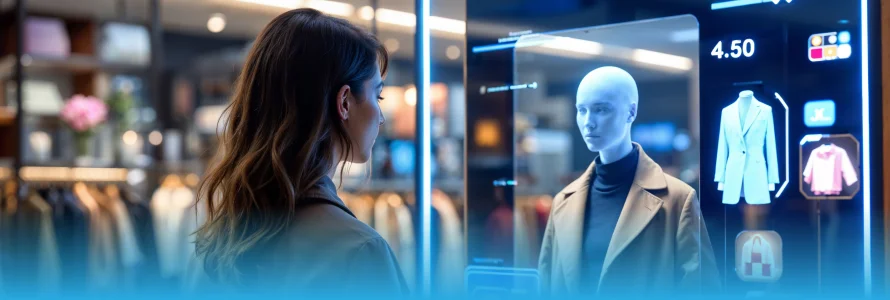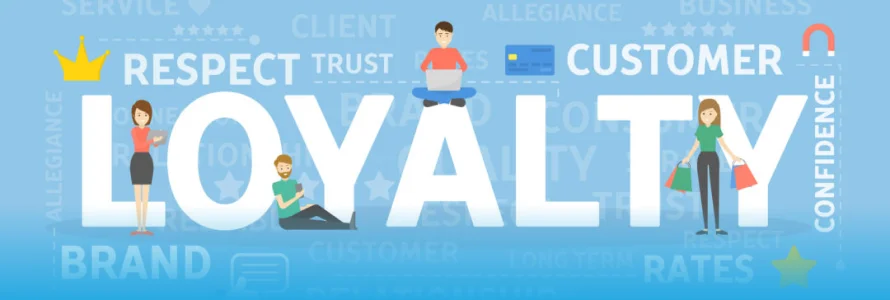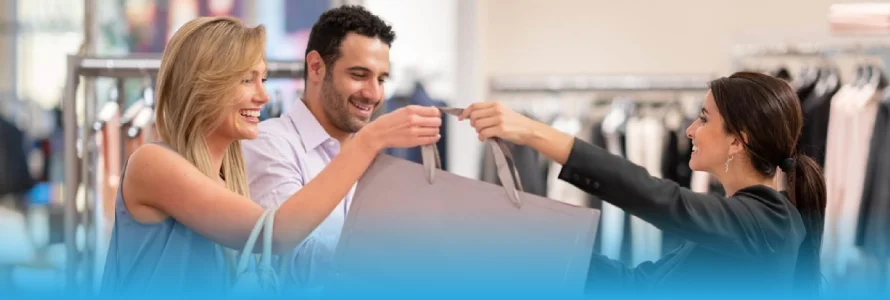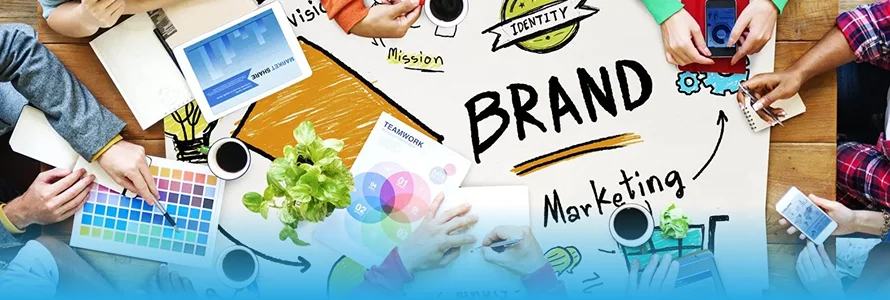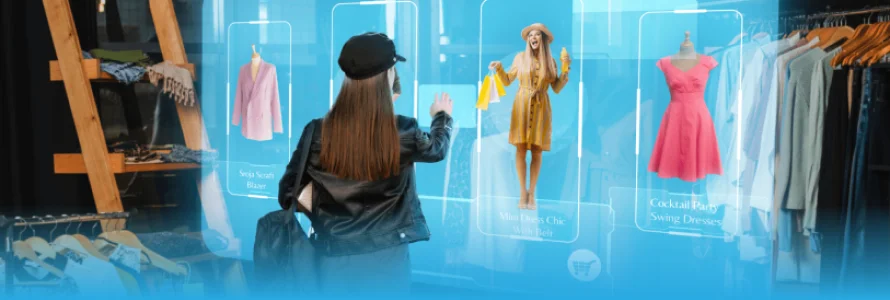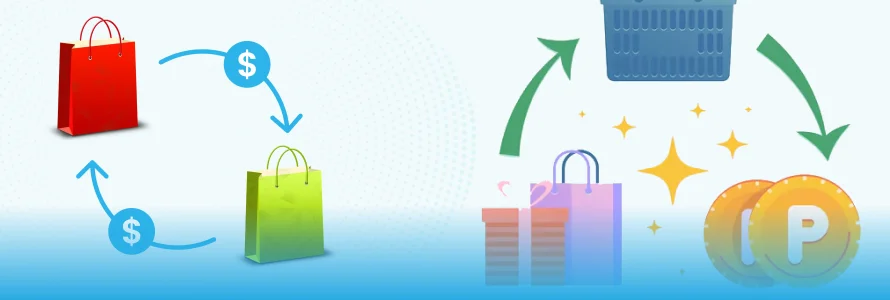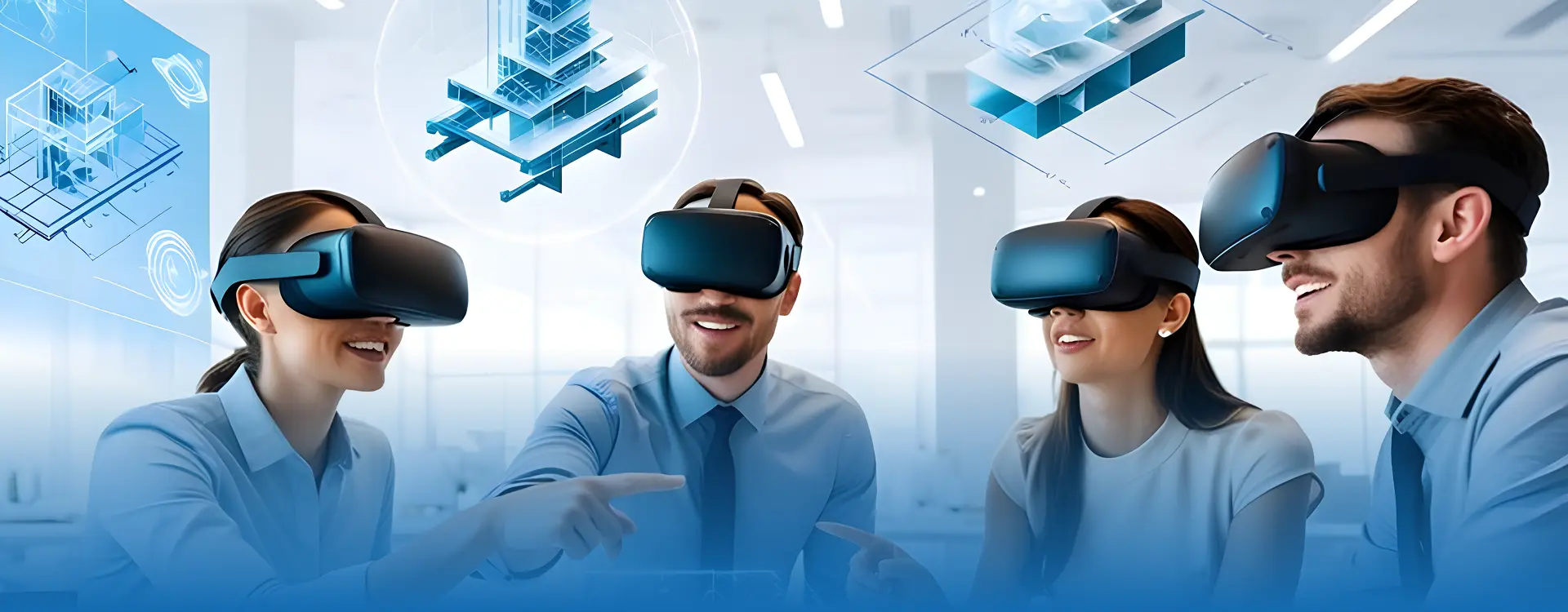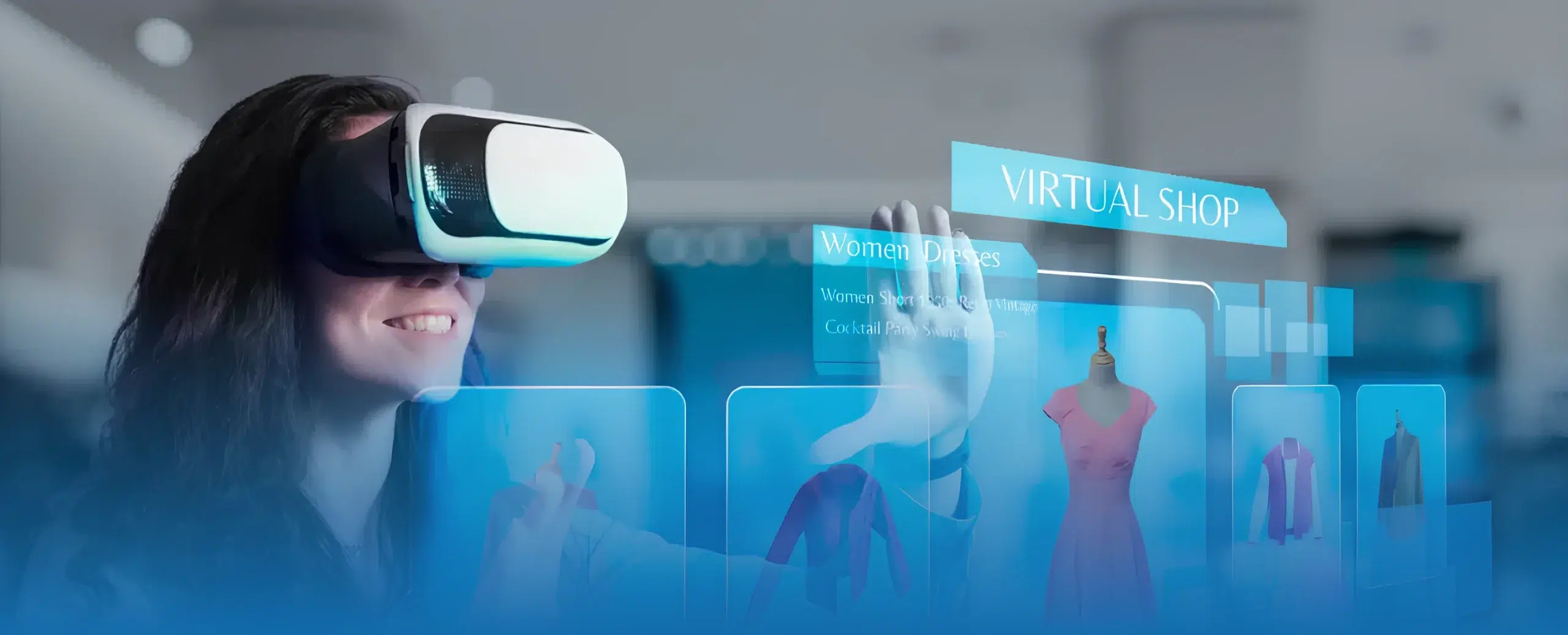
E-Commerce in 2025: The Role of AR/VR and Personalized Experiences
Introduction
If you run an e-commerce business, you already know how fast things are changing. In 2025, it’s not just about listing products online. Now, people want to feel connected to what they are buying. They want to see how a sofa looks in their living room before they order it or walk through a store from the comfort of their couch. They also like receiving product suggestions that match their exact style without them having to search too hard. That’s where AR, VR, and AI come in. The good news? These tools are no longer reserved for tech giants. Even small and mid-sized online stores can use them to deliver a personalized experiences to their customers.
In this article, we will explore how AR can give your customers confidence before they buy, how VR can turn online browsing into an experience they’ll remember, and how AI personalization can make every shopper feel like your store was built just for them. We’ll also talk about the practical side: what these tools mean for your business, how other brands are using them, and how you can start using them in your own store. By the end, you’ll have a clear picture of what e-commerce looks like in 2025 and some actionable ideas to bring into your own store.
The Next Big Chapter in E-Commerce
E-commerce is growing at an incredible pace. By 2025, global online sales are projected to reach $7.5 trillion, compared to $5.7 trillion in 2023 (Source: cimulate.ai). This shows just how much people enjoy the ease and variety of shopping online.
What makes this growth exciting is not just the higher numbers but the way shopping itself is changing. Customers are no longer just browsing static product images. They are exploring how a sofa looks in their living room, virtually trying on sneakers, and comparing products in real time.
For e-commerce business owners, this shift brings new opportunities. Tools that make shopping more immersive and personal, such as augmented reality, interactive visuals, and tailored recommendations, are more widely available and becoming easier to use.
How AR Helps Shoppers Choose Better
Shopping online can sometimes feel uncertain. Will the furniture fit in the living room? Does this pair of glasses suit my face? Augmented reality (AR) helps remove that doubt by letting shoppers place products in their own space or try them virtually before deciding.
 Here are some eye-opening stats:
Here are some eye-opening stats:
- 66 percent of shoppers who use AR report being less likely to return a product, and 80 percent say AR makes them feel more confident in their choices. [Source: Banuba]
- 56 percent of consumers say AR makes them feel more certain about a product’s quality. Plus, 61 percent say they prefer shopping at stores that offer AR features. [Source: Councils]
- Nearly 90 percent of Americans are already using or are open to using AR while shopping, and 98 percent of those who have tried it found it helpful for making decisions. [Source: BrandXR]
These numbers show a simple truth. AR is not just a cool feature; it builds trust and clarity. Shoppers second guess less, and they feel like the product is coming to life right on their screen. That sense of confidence makes the whole shopping journey smoother and more enjoyable. In short, AR lets customers be sure instead of just hopeful about what they choose.
How VR Turns Browsing into an Immersive Journey
With Virtual Reality (VR), your store can become a fully interactive digital showroom where customers move around, pick up products, and see them from every angle, almost as if they were standing in your physical store.
Instead of simply looking at flat images or scrolling through long product lists, shoppers can walk through collections, mix and match items, and even check how products work together. Some platforms also allow shared spaces where friends and family can shoptogether, chat, and compare options in real time.
This sense of immersion creates a stronger emotional connection with products. Shoppers feel more confident in their choices because they are experiencing the products in a natural and engaging way. For retailers, VR is not just about showcasing items, it is about giving people a memorable journey that keeps them coming back.
Some current insights and statistics show how VR will become a big part of e-commerce:

The global VR in retail market is on track to grow from around $5.7 billion in
2024 to roughly $24.1 billion by 2030, rising at a compound annual growth
rate of 27%. (Source: GlobeNewswire )
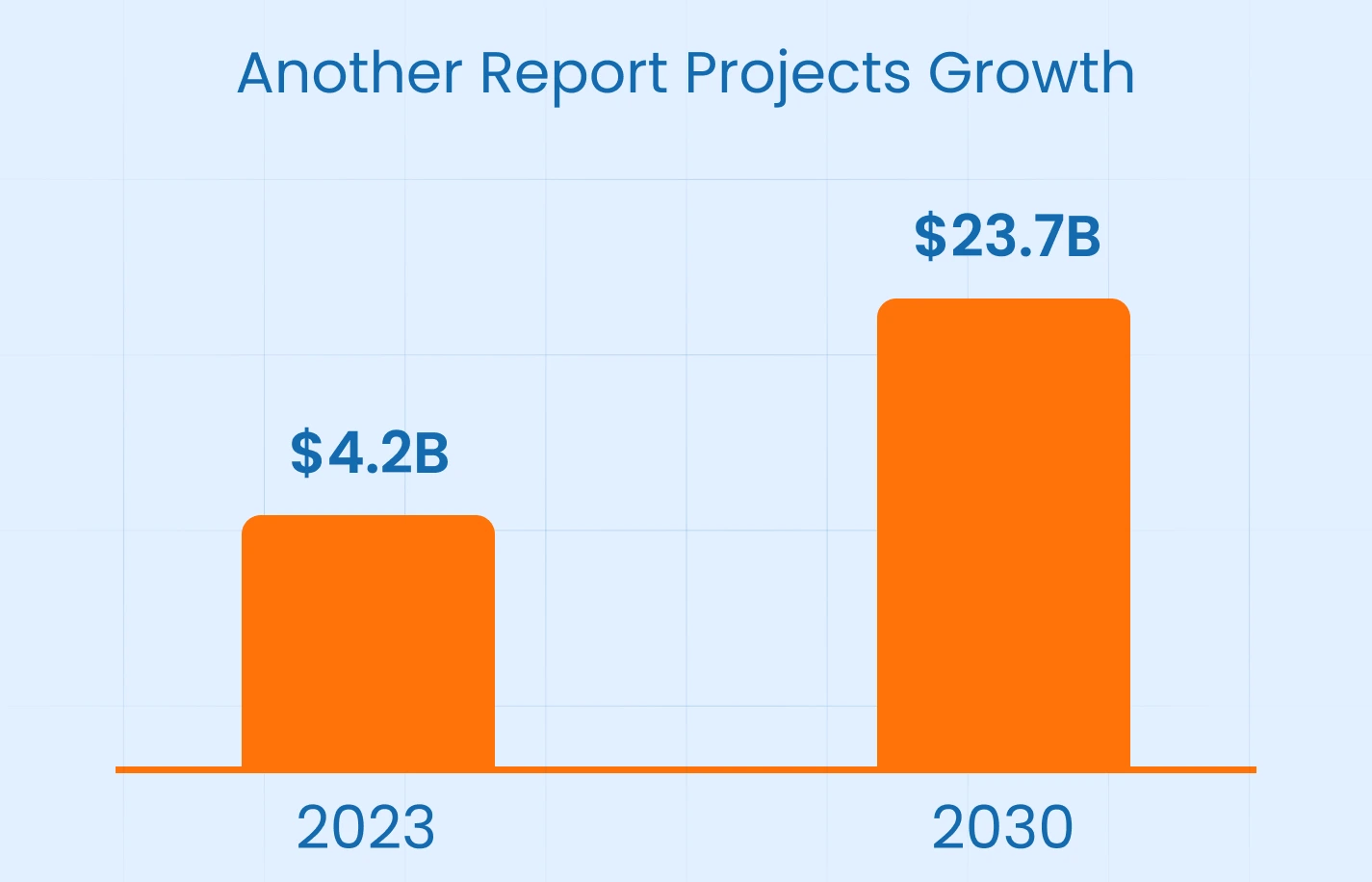
Another report projects growth from about $4.2 billion in 2023 to nearly $23.7 billion in 2030, with a yearly growth rate of 28%. (Source: Grand View Research)
These numbers are not just signs of market growth. They show that VR is becoming part of the way people prefer to shop. In short, VR makes your online store feel interactive, lively, and memorable. It gives customers the chance to explore, compare, and connect with your products in a way that feels natural, all without leaving home.
How AI Understands Customer Preferences
AI personalization is changing how customers shop online. Instead of a one-size-fits-all approach, AI studies browsing patterns, past purchases, and even how long someone spends on a product page to make every interaction feel personal.
Businesses that use personalization through AI often see conversion rates rise by up to
10% (Source: ecomposer.io). And with 92% of businesses already using generative
AI to improve customer experience (Source: cimulate.ai), it’s clear that personalization is no longer optional — it’s expected.
AI personalization isn’t just about improving sales; it’s about creating experiences that make customers feel valued every time they shop.
Key Benefits of AR, VR, and AI For Your Business
Real-World Examples from Leading Brands
Businesses are already using these technologies with great success:
- Saks Global saw a 7% increase in revenue per visitor after launching AIpowered personalized homepages (Source: Vogue Business).
- In China, AI sales avatars boosted livestream sales by 30% in just two hours (Source: Wired).
- Amazon’s AI assistant “Rufus” is projected to bring $700 million in profit in 2025 (Source: Business Insider).
How to Start With AR, VR, and AI
If you’re an e-commerce owner wondering how to apply this without a massive budget, here’s how:
- Start small: Add an AR tool for a few best-selling products.
- Use AI recommendations: Many affordable apps plug into your store.
- Test VR in stages: Begin with virtual product tours or 360-degree views.
- Work with experts: A software development partner can integrate these technologies smoothly.
Conclusion
E-commerce in 2025 is not only about selling things. It is about creating an experience that people enjoy and remember. Tools like AR help shoppers see products more clearly, VR makes exploring products more fun, and smart personalization keeps customers interested and coming back.
For business owners, starting early with these tools can make a big difference. It can help you reduce returns, keep customers happy, and grow your brand faster.
At Brevity Technology Solutions, we help businesses improve their online stores and stay ready for the future. Whether you need help using new tech, upgrading your website, or making shopping more engaging for your customers, our team can guide you every step of the way.
Want to learn more? Book a free consultation call
Related Post
-
F
-
A
-
Q
AR (Augmented Reality) lets customers see how products would look or fit in their real space before buying. For example, trying furniture in your living room using your phone.
VR (Virtual Reality) creates a virtual store where customers can walk around, browse products, and shop just like in a physical store but from home.
AI personalization helps online stores show products and offers that match each customer’s taste. It makes shopping faster and easier and helps increase sales.
No. Many small and mid-sized businesses use these tools too. Affordable versions are available, and starting small can still bring good results.
The cost depends on your needs. A simple AR feature can be budget-friendly, while complex VR experiences may need more investment.
Yes. Many shoppers now expect better ways to view products online. AR helps reduce returns, and VR makes the shopping experience more fun, which keeps people engaged.
No. They add to the shopping experience rather than replace it. Customers still browse and buy the usual way, but these tools make it easier and more exciting.
We help businesses set up and use these tools the right way. From choosing the right tech to making it work smoothly on your site, we guide you at every step.
It depends on the project. A simple feature can take a few weeks, while a full setup may take a few months. We can provide accurate timeline after consultation.
We make sure your team understands how to use these tools. Training and support are included so you feel confident managing them.
Yes. AR and VR can work on smartphones, tablets, and computers. Most shoppers today use mobile, so these tools are designed to be mobile-friendly.
Better customer experience, fewer returns, higher sales, and stronger loyalty over time.
Want to Scale
Your Business? Let’s Meet & Discuss!

CANADA
30 Eglinton Ave W Mississauga, Ontario L5R 3E7

INDIA
3rd floor Purusharth Plaza, Amin Marg, Rajkot, Gujarat. 360002
Get a Quote Now
Let's delve into a thorough understanding of your challenges and explore potential solutions together
